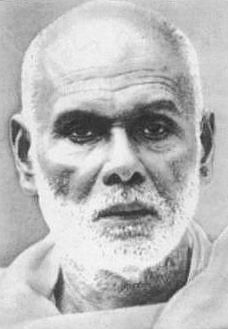
Kozhikode, also known in English as Calicut, is a city along the Malabar Coast in the state of Kerala in India. It has a corporation limit population of 609,224 and a metropolitan population of more than 2 million, making it the second most populous metropolitan area in Kerala and the 19th largest in India. Kozhikode is classified as a Tier 2 city by the Government of India.
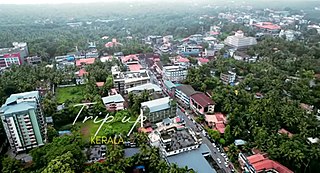
Vatakara,, , French: Bargaret, is a Municipality, Taluk and a major town in the Kozhikode district of Kerala state, India. The municipality of Vatakara covers an area of 23.33 km2 (9.01 sq mi) and is bordered by Mahé to the north and Payyoli to the south. It is the headquarters of Vatakara taluk, which consists of 22 panchayats. During the reign of the Kolathiris and Zamorins, Vatakara was known as Kadathanadu. During the British Raj, it was part of the North Malabar region of Malabar District in the state of Madras. The historic Lokanarkavu temple, made famous by the Vadakkan Pattukal, is situated in Vatakara. A new tardigrade species collected from Vadakara coast has been named after Kerala State; Stygarctus keralensis.

The Daughter of Time is a 1951 detective novel by Josephine Tey, concerning a modern police officer's investigation into the alleged crimes of King Richard III of England. It was the last book Tey published in her lifetime, shortly before her death. In 1990 it was voted number one in The Top 100 Crime Novels of All Time list compiled by the British Crime Writers' Association. In 1995 it was voted number four in The Top 100 Mystery Novels of All Time list compiled by the Mystery Writers of America.

Malabar District, also known as Malayalam District, was an administrative district on the southwestern Malabar Coast of Bombay Presidency (1792–1800), Madras Presidency (1800–1937), Madras Province (1937–1950) and finally, Madras State (1950–1956) in India. It was the most populous and the third-largest district in the erstwhile Madras State. The historic town of Calicut was the admisnitrative headquarters of this district.
The term Kerala was first epigraphically recorded as Cheras (Keralaputra) in a 3rd-century BCE rock inscription by the Mauryan emperor Ashoka of Magadha. It was mentioned as one of four independent kingdoms in southern India during Ashoka's time, the others being the Cholas, Pandyas and Satyaputras. The Cheras transformed Kerala into an international trade centre by establishing trade relations across the Arabian Sea with all major Mediterranean and Red Sea ports as well those of Eastern Africa and the Far East. The dominion of Cheras was located in one of the key routes of the ancient Indian Ocean trade. The early Cheras collapsed after repeated attacks from the neighboring Cholas and Rashtrakutas.
Emperor v Aurobindo Ghosh and others, colloquially referred to as the Alipore Bomb Case, the Muraripukur conspiracy, or the Manicktolla bomb conspiracy, was a criminal case held in India in 1908. The case saw the trial of a number of Indian nationalists of the Anushilan Samiti in Calcutta, under charges of "Waging war against the Government" of the British Raj. The trial was held at Alipore Sessions Court, Calcutta, between May 1908 and May 1909. The trial followed in the wake of the attempt on the life of Presidency Magistrate Douglas Kingsford in Muzaffarpur by Bengali nationalists Khudiram Bose and Prafulla Chaki in April 1908, which was recognised by the Bengal police as linked to attacks against the Raj in the preceding years, including attempts to derail the train carrying Lieutenant-Governor Sir Andrew Fraser in December 1907.
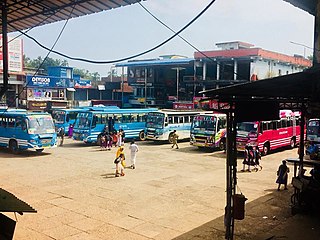
Nadapuram is a census town and a special grade Panchayath located in Kozhikode District of Kerala, coming under Nadapuram assembly constituency. It is in North Malabar region of Kerala, India; spread over an area of 20.44 km2
Chekavar were the warriors belonging to Hindu Thiyya community in Malabar of Kerala. Many Thiyya families today trace their roots to this Chekavar lineage.

The Ezhavas are a community with origins in the region of India presently known as Kerala, where in the 2010s they constituted about 23% of the population and were reported to be the largest Hindu community. The Malabar Ezhava group have claimed a higher ranking in the Hindu caste system than do the others, although from the perspective of the colonial and subsequent administrations they were treated as being of similar rank.

Unniyarcha (ഉണ്ണിയാർച്ച) is a legendary warrior and heroine from the 16th century, mentioned in the Vadakkan Pattukal, a set of historical ballads from northern Kerala, a state in southwestern India. She was a member of a Thiyyar community family called Puthooram Veed in Kadathanad. Her father's name was Kannappa Chekavar. She is believed to have lived in the northern part of Kerala during the 16th century. She is a popular character in Kerala's folklore and is remembered for her valour and skills in Kerala's native martial art, Kalaripayattu. According to legend, Unniyarcha was mostly known for her deadly skill with the whip-like urumi, a unique type of sword that originates from Kerala. Like most traditional Kalaripayattu practitioners, she began training at the kalari at the age of seven.

Rajapaksa Wickramasekera Mudiyanselage Bandaranayake Monarawila Keppetipola, more widely known as Keppetipola Disawe was a Disawe, a high-ranking official under the rule of King Sri Wikrama Rajasinghe and later under the British Administration in Sri Lanka. He was a prominent leader of the Uva rebellion of 1818 after he joined the rebels whom he was sent to suppress by the British. The rebellion was defeated by the British, and Keppetipola Disawe along with several other leaders of the rebellion were found guilty of high treason and sentenced to death. He is well known for the exceptional courage that he showed at the moment of his execution and is now a national hero of Sri Lanka.
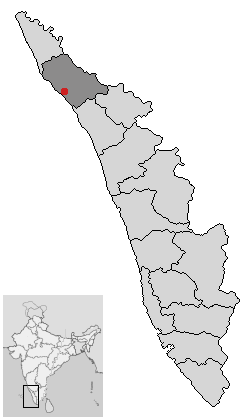
The Mannanar were a Thiyya dynasty of Malabar, a well known ruler, in the present-day Kannur and Kasaragod districts of India. The ruins of Mannanar palace can still be seen at the foot of the Ghats borders of Coorg. The Mannanar palace in Eruvesi to the North West of Taliparamba was called as Anju Aramana.Kunnathoor Padi Muthappan madapura and Padikutti temples were their royal family temples.

The portrayal of women warriors in literature and popular culture is a subject of study in history, literary studies, film studies, folklore history, and mythology. The archetypal figure of the woman warrior is an example of a normal thing that happens in some cultures, while also being a counter stereotype, opposing the normal construction of war, violence and aggression as masculine. This convention-defying position makes the female warrior a prominent site of investigation for discourses surrounding female power and gender roles in society.
Edachena Kunkan was a Wayanad Nair noble from Tirunelli, Wayanad, Kerala, India who joined the war effort of Pazhassi Raja during the 1770s and became commander of the Raja's army. His younger brothers joined him as generals. Kunkan was a popular leader in Wayanad, gathering support from people of many classes for Raja's war against the East India Company.

The legal systems of ancient Tamilakam were instituted by the State. It was governed by the Tamil principles of: Aram, Maram, Pazhi, and Nan. If a monarch failed in the act of aram, it would then bring eternal blame (pali) from their own subjects. If, on the other hand, they failed in the act of maram, it would be shame (nan) to them.

Santhosh Kesavan Nayar is an Indian actor who appears in Malayalam cinema. He has acted in more than 100 films as villain, hero, second hero and as comedian as well.
Malappuram is one of the 14 districts in the South Indian state of Kerala. The district has a unique and eventful history starting from pre-historic times. During the early medieval period, the district was the home to two of the four major kingdoms that ruled Kerala. Perumpadappu was the original hometown of the Kingdom of Cochin, which is also known as Perumbadappu Swaroopam, and Nediyiruppu was the original hometown of the Zamorin of Calicut, which is also known as Nediyiruppu Swaroopam. Besides, the original headquarters of the Palakkad Rajas were also at Athavanad in the district.
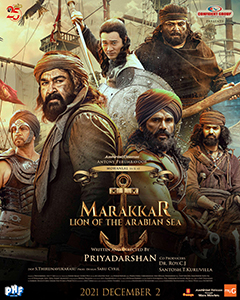
Marakkar: Lion of the Arabian Sea is a 2021 Indian Malayalam-language epic historical action film directed by Priyadarshan. Set in the 16th century Calicut, the film is based on the fourth Kunjali Marakkar named Muhammad Ali, the admiral of the fleet of the Zamorin. Priyadarshan scripted the film with Ani Sasi. The film is produced by Antony Perumbavoor's Aashirvad Cinemas. Marakkar features Mohanlal in the titlular role, with ensemble cast including Arjun Sarja, Suniel Shetty, Ashok Selvan, Prabhu, Nedumudi Venu, Mukesh, Siddique, Manju Warrier, Keerthy Suresh, Kalyani Priyadarshan, Suhasini Maniratnam, Innocent, Mamukkoya, Hareesh Peradi, Santhosh Keezhattoor and K. B. Ganesh Kumar. In the film, upon being terrorised by an oppressive Portuguese regime, legendary naval chieftain Kunjali Marakkar IV wages an epic war against the Europeans and their allies. This film was Keerthy Suresh's comeback to Malayalam cinema after a gap of seven years and the Malayalam debut of Ashok Selvan.
Polarthiri was a royal house of Nair origin which ruled part of Calicut before Zamorin around 1200s and later Kadathanadu in South India. Ruled by the Polarthiries, Kadathanadu garnered renown, particularly for its association with the martial art form of Kalaripayattu, a discipline known for producing formidable warriors.

